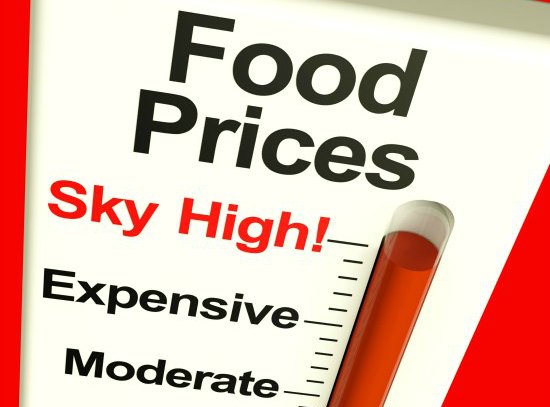The state of global geopolitics is becoming increasingly unstable. Now that Russia and Ukraine are conflicting in actual war, we are seeing a looming food crisis. In fact, flour rationing in Lebanon and grain hoarding in Hungary have now begun. As a result, we are likely to see major increases in these four food items at our grocery stores – if we can even find them in the coming weeks!
World food prices hit a record high in February, led by a surge in vegetable oils and dairy products, to post a 20.7% increase year-on-year, the United Nations food agency said. A lot of these increases had already started before the conflict in Ukraine. Now that the conflict is increasing, we should prepare and stock up on these four food items:
1. Cereal – Wheat is the main ingredient in many leading dry cereals, so expect a sharp increase in price. Alternatively, you can invest in oatmeal, corn grits, or simply take dry cereals off your grocery list until the price declines.
2. Bread including pastries and tortillas – Stock up on loaves of bread, pastries, and tortillas now and freeze them for future uses if you can’t live without them. Frozen bread can last up to 6 months in the freezer, and has the capacity to last longer if you take extra protective measures when freezing.
3. Pasta – Unfortunately, this relatively cheap and filling food source will also likely increase in price. Take advantage of the lower prices now and stock up on this pantry staple or learn to make your own. (See our recipe below)
4. Grains – In general, we are likely to see sharp increases in grains. As well, due to the likelihood of people storing extra, there could be a scarcity of grains in the grocery store and even possible price gouging.
Stock Up!
What can you do to help prepare for the increases in prices and potential shortages? Of course, stock up on the things you use regularly. We mention often that prices will never be lower than they are right now since we entered into a major inflationary crisis. Because we can expect the prices to rise with inflation, supply and demand will also play a role, so it’s imperative to stock up if these food items are important to you and your family.
Grow Your Own
The other thing you can do is simply grow your own wheat! Most of these foods are wheat-based and that appears to be the commodity being affected the most in these times. Wheat is relatively easy to grow, and this growing quite can help you further if you would like to try it this spring and summer! Look for open-pollinated wheat seeds so you can collect the seeds for the future.
If you decide to try growing wheat, we suggest hard red spring wheat. It is planted in early spring and yields a bigger harvest than the hard winter spring wheat. HRS wheat also packs in more protein! And you don’t even have to cook this wheat once you’ve harvested it! Just toss some right on your salad and savor the full robust flavor. Wheat also contains the highest fiber content of all the grains and it is a good source of minerals, such as zinc, iron, magnesium, and manganese.
 A move toward self-sufficiency by growing your own wheat and making your own pasta, cereals, or bread is definitely worth the hassle. Even if you have wheat allergies, you can find alternatives and stock up on those.
A move toward self-sufficiency by growing your own wheat and making your own pasta, cereals, or bread is definitely worth the hassle. Even if you have wheat allergies, you can find alternatives and stock up on those.
One of my personal favorite flours (i actually use this more than the standard wheat flour) is Arrowroot! This type of flour is ground from the root of the Arrowroot plant. It is tasteless and ideal to use as a thickener. I make dairy-free alfredo sauce for my daughter out of this and the entire family loves it! If you need to take dietary restrictions in mind, this is an excellent alternative!
Check out the article below for more options on wheat-free flours you could substitute if you choose!
Once you know what you are going to do, be it stocking up on flour or pasta, growing your own wheat, or using alternatives to wheat, learn to make your own bread and pastries! Here are some great recipes to start with:
Recipes For the Bread Baking Challenged
Pantry Basics: Staple Foods Focus on Bread
Why Sourdough Bread Is Great For Your Health (with recipes)
Amazing Whole Wheat Bread Recipe
If you are going to try to make your own pasta or noodles, a hand-operated (manual) pasta machine will help you out! I always suggest kitchen tools that can be used in the absence of electricity. You never know when you will have to go back to using them, and something as unanticipated as a blizzard or tornado could knock out electricity for quite some time. Preparing means covering all of our bases!
The shortage of wheat and food products made from it shouldn’t be something that leads us down a path of fear. Instead, it should push us into even more self-sufficiency and give us a reason to help our neighbors who may not quite understand just how important all of this planning and preparation actually may be in the coming weeks and months.
This article was originally published at Ready Nutrition™ on March 11th, 2022







